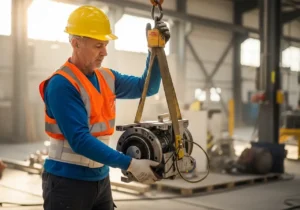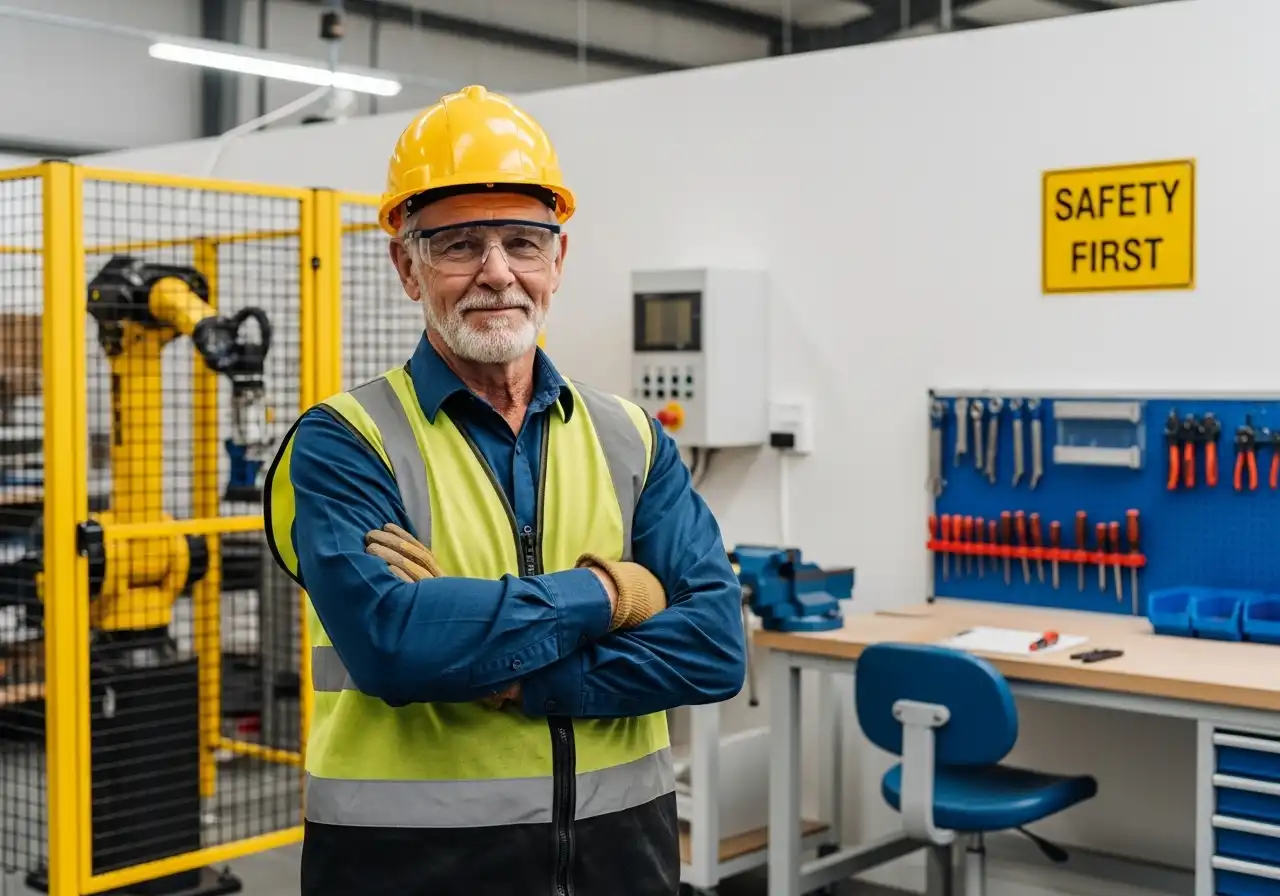As the global workforce ages, industries are facing unique challenges. In the United States, older workers are becoming a larger portion of the labor force, driven by factors such as longer life expectancy and delayed retirement. The increase in the number of aging workers has raised concerns about workplace injury rates, as older employees tend to face greater risks and longer recovery times. In this blog post, we will explore the connection between an aging workforce and workplace injuries, how these injuries impact workers’ compensation, and the strategies employers can adopt to mitigate these risks.
Understanding the Aging Workforce
The U.S. Bureau of Labor Statistics (BLS) has documented a substantial increase in the number of older workers. By 2024, the BLS projects that 25% of the workforce will be aged 55 or older. In 2020, there were more than 10 million workers aged 65 and older in the U.S., which was an increase of more than 70% from 2000. This shift is a result of longer life expectancy and fewer workers retiring due to financial necessity or personal choice.
Older workers bring vast experience and knowledge to their roles. However, age-related physical changes can impact their ability to perform certain tasks, especially those requiring physical exertion, strength, or stamina. As a result, injuries in older workers are not only more frequent but can also be more severe and require longer recovery times.

Injury Rates Among Older Workers
While older workers are less likely to be injured in comparison to younger workers, the injuries they do sustain tend to be more severe. According to the Centers for Disease Control and Prevention (CDC), the injury rate for workers aged 55 and older is notably higher for falls, slips, and trips. Moreover, the recovery time for these injuries tends to be longer.
The Bureau of Labor Statistics has reported that the rate of fatal workplace injuries increases with age. For example, workers aged 65 and older experience fatal injuries at a rate higher than younger workers. Additionally, older workers are less likely to fully recover from injuries. Musculoskeletal injuries and other chronic conditions, such as arthritis, can compound these issues, leading to long-term disability.
Factors Contributing to Increased Injury Rates
There are several factors that contribute to the increased injury rates among older workers. These factors can be broadly categorized into physical changes, environmental factors, and industry-specific challenges.
Physical Changes
As workers age, their bodies undergo changes that can impair physical performance. Decreased muscle mass, joint stiffness, and slower reaction times are common in older adults. These physical changes can significantly increase the risk of workplace injuries.
For instance:
- Reduced Strength and Endurance: Older workers may not be able to lift as much weight or exert the same physical effort as they did in their younger years. This can lead to back strains, sprains, and other musculoskeletal injuries.
- Decreased Balance and Coordination: Age-related changes to the nervous system, such as reduced balance and coordination, make older workers more susceptible to falls, especially in environments where the risk of tripping or slipping is high.
-
Slower Recovery Time: The body’s ability to heal after an injury decreases with age, meaning that injuries sustained by older workers may require a longer recovery period.
Chronic Health Conditions
Chronic health conditions, which are more common in older workers, can further exacerbate the risk of injury. These conditions can impact mobility, reaction time, and overall health. Common conditions that can increase injury risk include:
- Arthritis: This condition can affect the joints, causing pain and stiffness that can limit mobility and increase the risk of falls.
- Cardiovascular Disease: Reduced blood flow and heart function can affect a worker’s stamina and increase the likelihood of fatigue-related accidents.
- Vision Impairment: Deteriorating vision, whether from age-related macular degeneration or other conditions, can lead to accidents caused by poor visibility.
Workplace Environment
The physical environment in which older workers are employed also plays a significant role in the injury rates. Workplaces that require heavy lifting, repetitive motions, or working in hazardous conditions pose a higher risk for older employees. The following workplace factors are particularly concerning:
- Lifting and Physical Labor: Jobs that require frequent lifting, bending, or heavy manual labor can place significant strain on older workers, leading to back and joint injuries.
- Repetitive Motions: Jobs that involve repetitive motions, such as assembly line work or office tasks like typing, can contribute to conditions such as carpal tunnel syndrome.
- Slippery or Hazardous Environments: Construction sites, manufacturing plants, and hospitals present environments that are often hazardous, with uneven surfaces, cluttered spaces, or exposed machinery. These increase the likelihood of trips and falls, particularly for older workers who may have reduced balance and agility.
Industries Most Affected by Aging Workforce Injury Rates
Certain industries are more vulnerable to injury rates among older workers due to the nature of the job tasks. Some of the most affected industries include:
Construction
The construction industry is one of the most physically demanding industries. Workers in construction often engage in heavy lifting, using power tools, and working at great heights, all of which can lead to serious injuries. Older workers may struggle with the physical demands of these jobs and are more likely to suffer injuries such as falls, fractures, and sprains. Additionally, construction workers are exposed to harsh weather conditions, which can make working more dangerous for older individuals.
Manufacturing
Manufacturing jobs often involve repetitive motions, heavy machinery, and exposure to hazardous materials, all of which can lead to serious injuries. Older workers are particularly at risk for musculoskeletal disorders and other injuries from prolonged physical exertion. Furthermore, working with machinery increases the risk of accidents, especially when combined with the decreased reaction times of older workers.
Healthcare
Healthcare workers, especially those in hospitals, long-term care facilities, and nursing homes, often face significant risks due to physically demanding tasks. Lifting patients, cleaning up hazardous materials, and performing long shifts can lead to injuries. For older workers in the healthcare industry, the risks of back injuries and repetitive strain injuries are heightened, and recovery from these injuries can take longer.
Strategies for Mitigating Risks
Employers must implement a range of strategies to accommodate older workers and reduce injury rates. Below are some key measures that can help mitigate the risks faced by aging workers:
Ergonomic Adjustments
One of the most effective ways to accommodate older workers is by adjusting the workplace to minimize strain and support physical limitations. Ergonomic interventions may include:
- Adjustable chairs and desks to support comfortable seating.
- Tools and machinery designed to reduce physical strain.
- Lifting aids or mechanical assistance for tasks that require heavy lifting.
Flexible Work Schedules
Older workers may experience fatigue more easily than younger employees. Offering flexible work schedules allows them to take breaks, manage their energy levels, and avoid overexertion. Additionally, part-time positions or job-sharing arrangements can help older employees stay in the workforce while reducing physical strain.
Health and Wellness Programs
Encouraging older workers to engage in health and wellness programs can improve overall fitness and reduce the risk of injury. Regular physical activity can help maintain strength, flexibility, and balance, which are critical for injury prevention. Programs that focus on improving cardiovascular health, muscle strength, and balance are particularly beneficial for older workers.
Training and Awareness
Employers should provide training that addresses the specific needs of older workers. This training can include safe lifting techniques, fall prevention, and ergonomics. Additionally, employers should foster an inclusive culture where older workers feel valued and supported, and where colleagues are trained to assist older workers in a respectful and safe manner.
Legal Considerations and Workers’ Compensation
Workers’ compensation laws are designed to protect workers who sustain injuries on the job. However, older workers may face challenges when filing workers’ compensation claims. Age-related discrimination, misconceptions about an older worker’s ability to perform certain tasks, and pre-existing medical conditions can sometimes lead to biased treatment during the claims process. Employers and insurance companies must ensure that their workers’ compensation policies are fair and non-discriminatory.
In many cases, older workers who suffer workplace injuries may experience longer recovery times, which can lead to greater financial strain. Therefore, it’s crucial that workers’ compensation policies consider these unique challenges. Older workers should consult legal professionals if they feel their rights are being violated or if they encounter obstacles in the claims process.
Conclusion
The aging workforce is a vital part of many industries, but it also presents unique challenges for employers and workers alike. Understanding the risks faced by older employees and implementing strategies to reduce injuries is essential to creating a safe and inclusive workplace. Employers who accommodate older workers through ergonomic adjustments, flexible work schedules, and health programs can reduce the likelihood of injury and enhance the overall well-being of their workforce. With these measures in place, the aging workforce can continue to contribute to the economy without compromising their health or safety.


